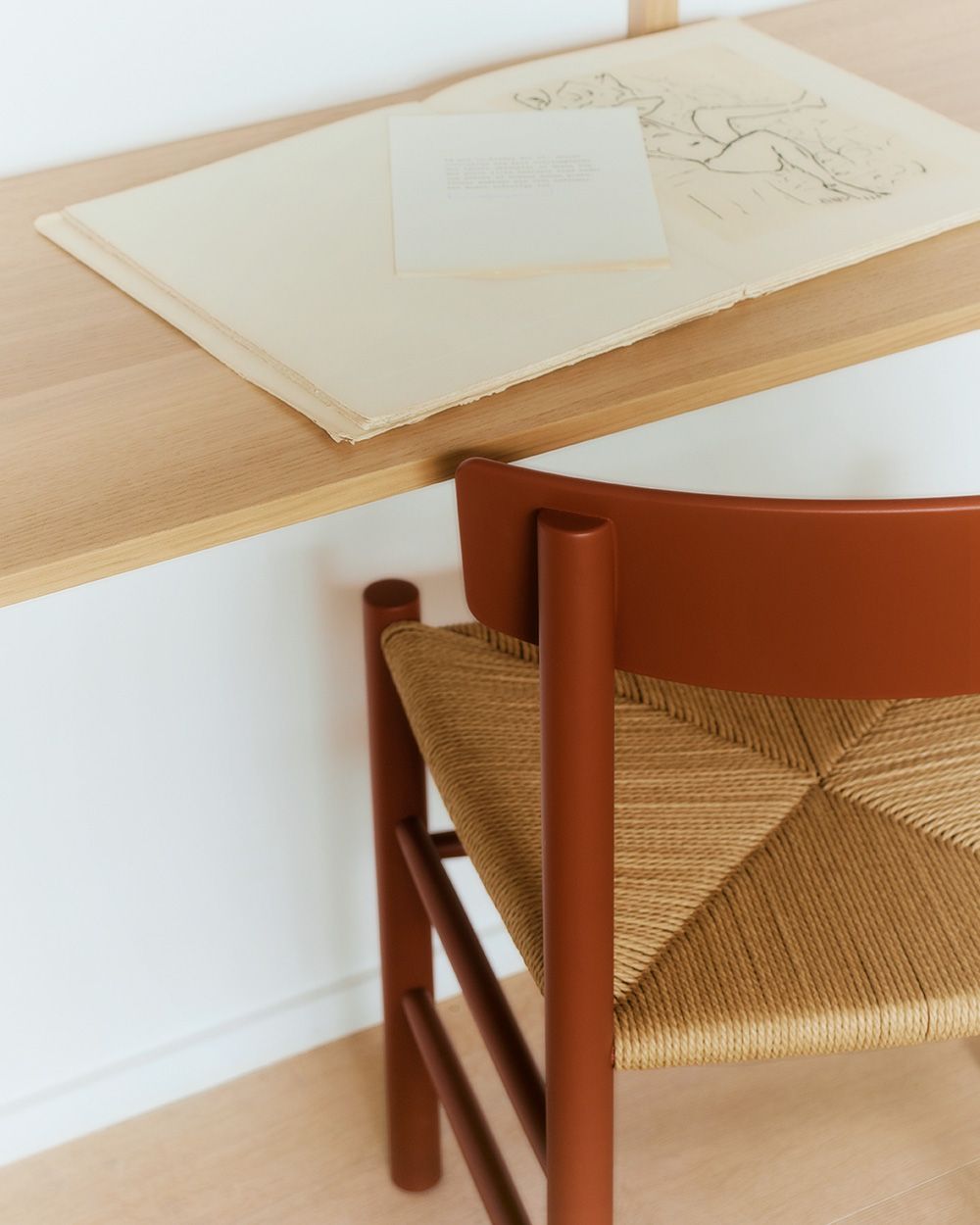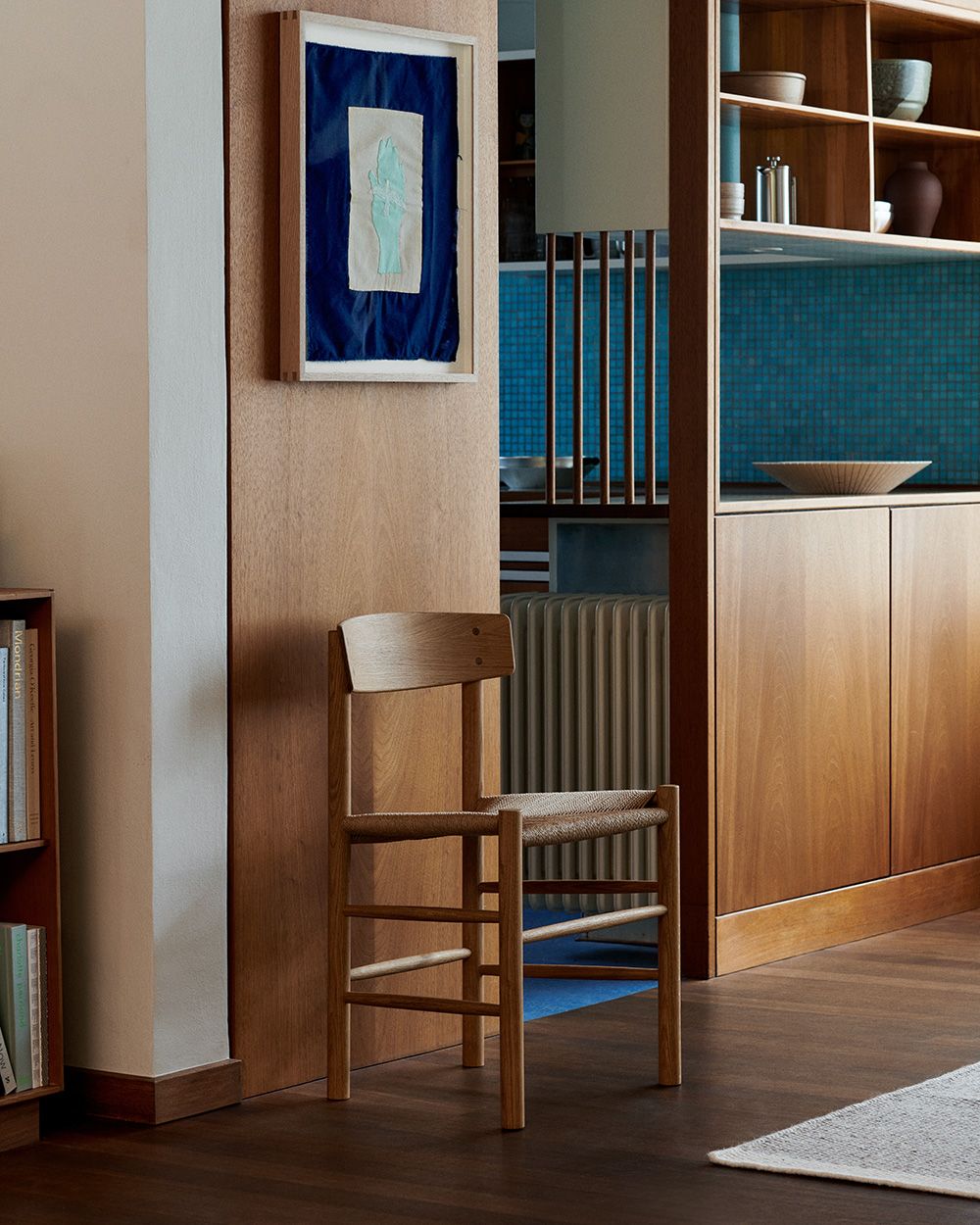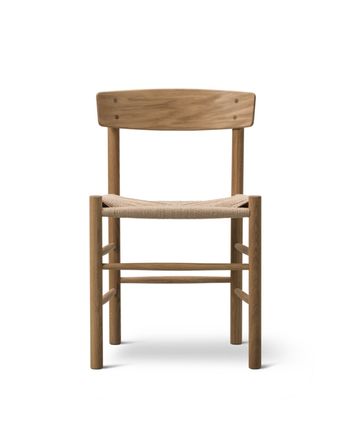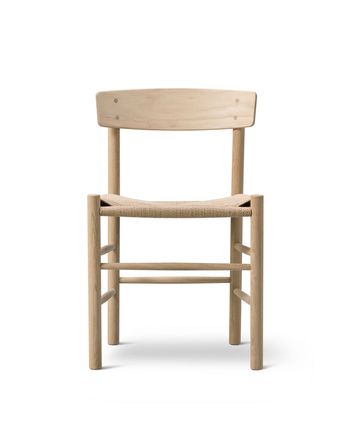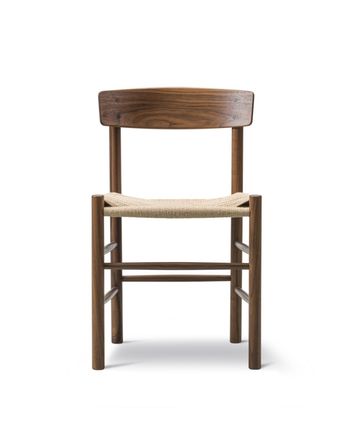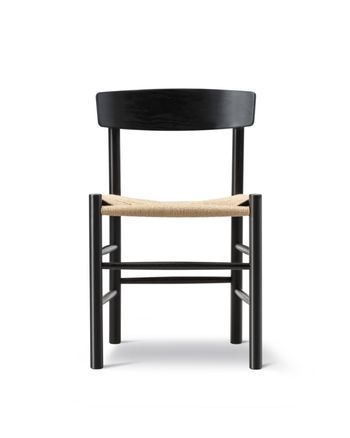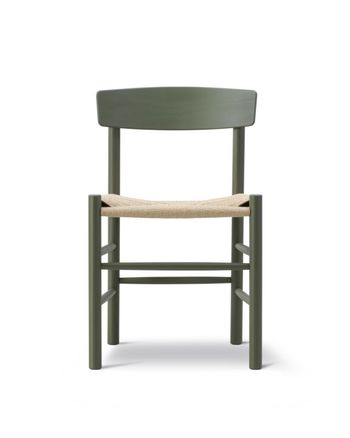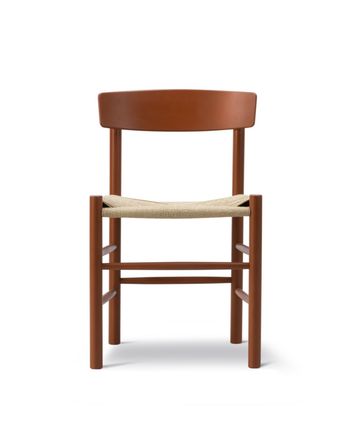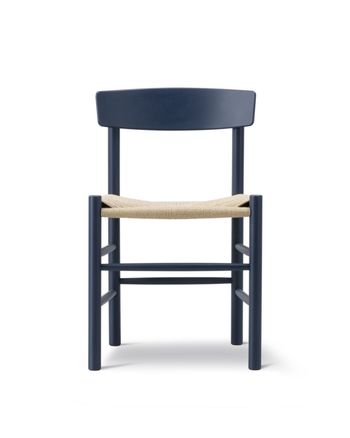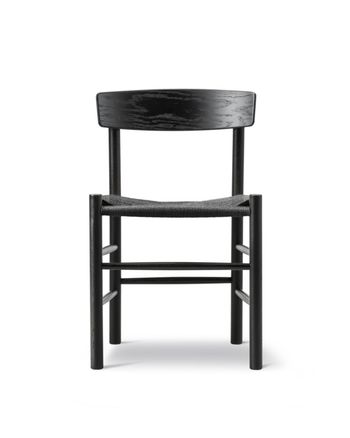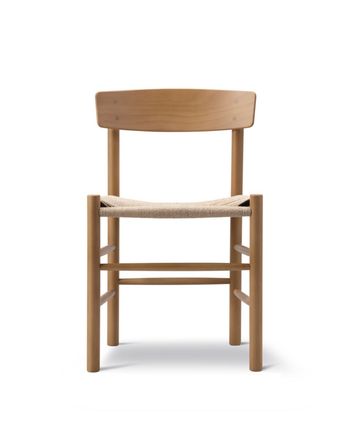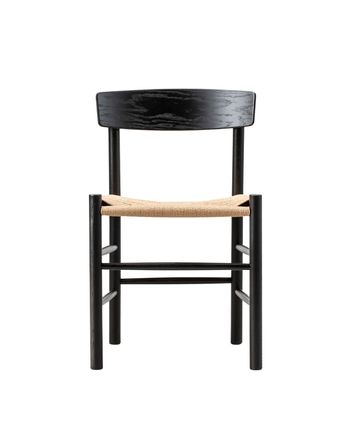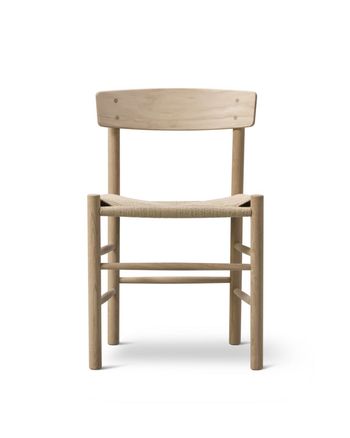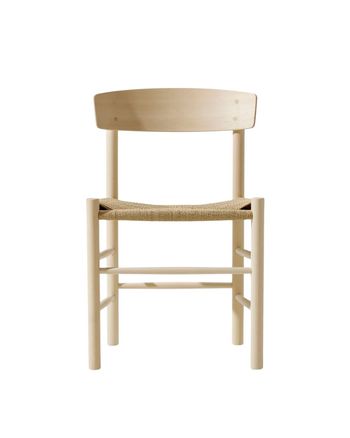The J39 looks simple, but carries a strong narrative of function, equality and Danish design philosophy.

Børge Mogensen was one of the first to democratise Danish design. Inspired by the different designs that the world around him offered, he further developed, perfected and revolutionised Danish joinery.
The J39 stands as one of the most iconic examples of his approach to design. The chair was developed as a simplification of Kaare Klint's Church Chair from 1936 and was strongly inspired by the rigorous and mathematical paradigm of Klint's design studio. The chair, which was first produced for FDB, was designed specifically for the Bethlehem Church in Copenhagen.
His designs were meant for the people and should meet them in their everyday lives, not just at prestigious design fairs or expensive hotels. This mindset gave birth to the chair aka 'Folkestolen' - a perfect example of a new generation of design in Denmark.

Børge Mogensen was one of the first to democratise Danish design. Inspired by the different designs that the world around him offered, he further developed, perfected and revolutionised Danish joinery.
The J39 stands as one of the most iconic examples of his approach to design. The chair was developed as a simplification of Kaare Klint's Church Chair from 1936 and was strongly inspired by the rigorous and mathematical paradigm of Klint's design studio. The chair, which was first produced for FDB, was designed specifically for the Bethlehem Church in Copenhagen.
His designs were meant for the people and should meet them in their everyday lives, not just at prestigious design fairs or expensive hotels. This mindset gave birth to the chair aka 'Folkestolen' - a perfect example of a new generation of design in Denmark.
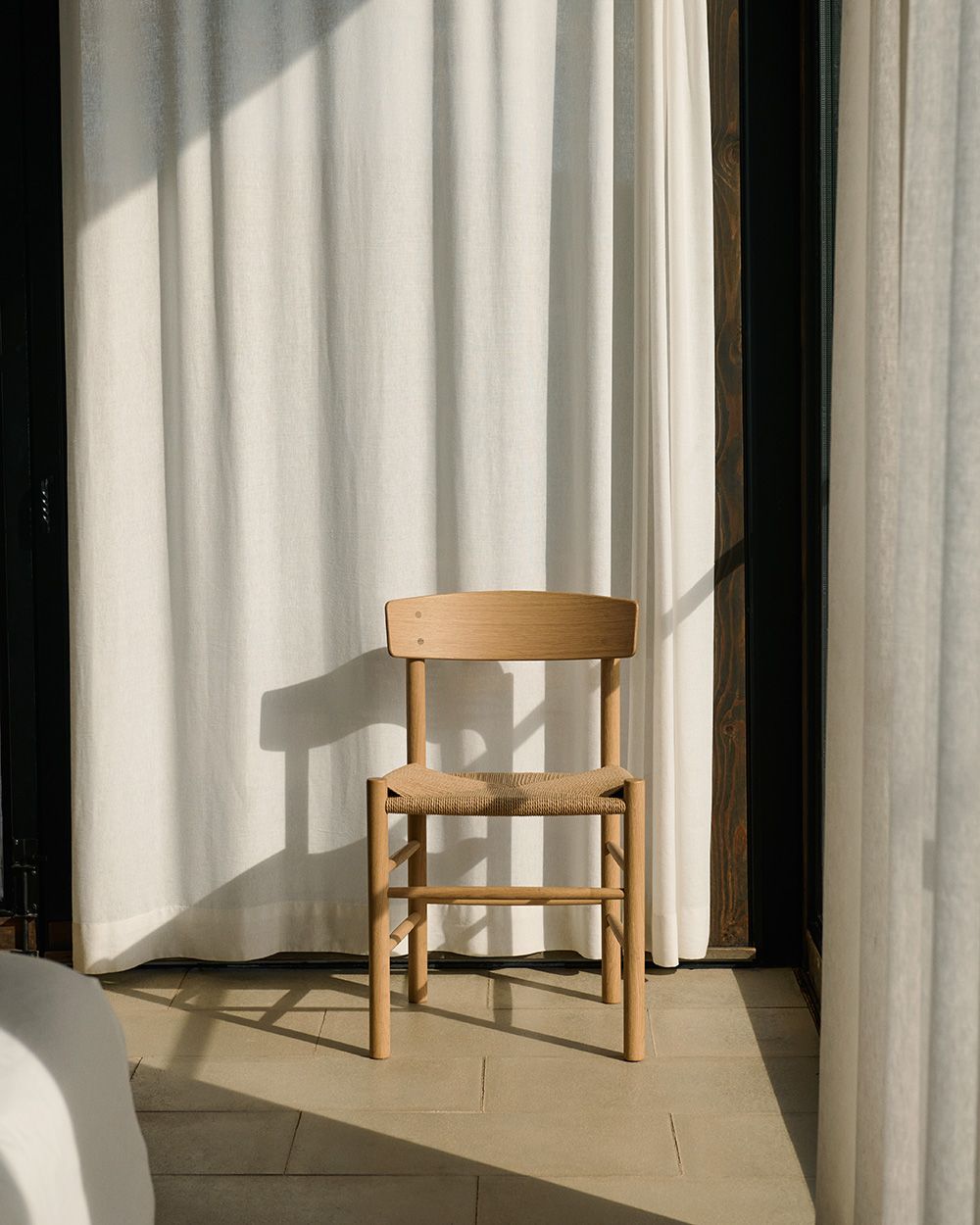
Taking Klint's Church Chair as a premise, Mogensen refined the design to reflect his own philosophy. The chair's backrest went from four simple backs to a wide backrest with an ergonomically curved shape to support the human back. Likewise, the chair's legs were straightened to four symmetrical and vertical chair legs, emphasising the chair's stringent and minimalist expression.
The iconic seagrass weave now adorned both the seat and backrest. The organic material resonated with Mogensen's approach to organic materials, but also offers exceptional comfort that over time will patina and adapt to the contours of the body. The original design, produced in beech and seagrass, has over the years adapted to modern times.
The organic materials are still at the core of the chair's design, but are today available in both changing oil finishes and colourful lacquers, inspired by Børge Mogensen's characterful country house and design studio in Lynderup.

Taking Klint's Church Chair as a premise, Mogensen refined the design to reflect his own philosophy. The chair's backrest went from four simple backs to a wide backrest with an ergonomically curved shape to support the human back. Likewise, the chair's legs were straightened to four symmetrical and vertical chair legs, emphasising the chair's stringent and minimalist expression.
The iconic seagrass weave now adorned both the seat and backrest. The organic material resonated with Mogensen's approach to organic materials, but also offers exceptional comfort that over time will patina and adapt to the contours of the body. The original design, produced in beech and seagrass, has over the years adapted to modern times.
The organic materials are still at the core of the chair's design, but are today available in both changing oil finishes and colourful lacquers, inspired by Børge Mogensen's characterful country house and design studio in Lynderup.
Explore the J39 Folkestolen in original paintwork and new colours

Børge Mogensen was one of the most influential figures in the development of Danish modernist design. Trained as both a cabinetmaker and furniture designer at the School of Arts and Crafts and the Royal Danish Academy of Fine Arts, he graduated from the Furniture School in 1941 under the direction of Kaare Klint.
Klint's strict and functionalist approach became a foundation for Mogensen's work, but Mogensen went his own way and developed a more democratic form of design, created to be used in everyday life and accessible to everyone. He strived to combine high quality craftsmanship with the possibilities of mass production and had a lifelong ambition to create furniture that would last for generations, both functionally and aesthetically.
In 1950, he established his own design studio and soon after began a lifelong collaboration with Andreas Graversen, who later took over Fredericia Furniture. Together they created a number of iconic pieces of furniture, including the J39, which came to symbolise Mogensen's vision of functional and accessible design for the people.

Børge Mogensen was one of the most influential figures in the development of Danish modernist design. Trained as both a cabinetmaker and furniture designer at the School of Arts and Crafts and the Royal Danish Academy of Fine Arts, he graduated from the Furniture School in 1941 under the direction of Kaare Klint.
Klint's strict and functionalist approach became a foundation for Mogensen's work, but Mogensen went his own way and developed a more democratic form of design, created to be used in everyday life and accessible to everyone. He strived to combine high quality craftsmanship with the possibilities of mass production and had a lifelong ambition to create furniture that would last for generations, both functionally and aesthetically.
In 1950, he established his own design studio and soon after began a lifelong collaboration with Andreas Graversen, who later took over Fredericia Furniture. Together they created a number of iconic pieces of furniture, including the J39, which came to symbolise Mogensen's vision of functional and accessible design for the people.


